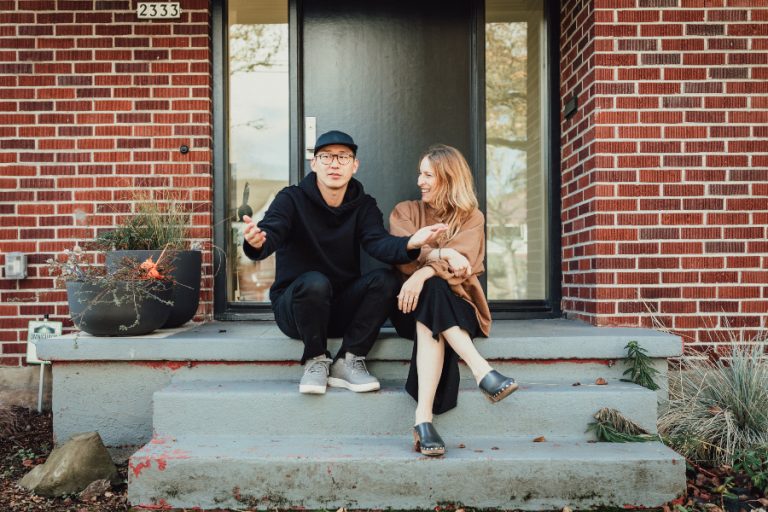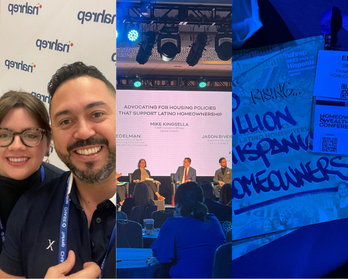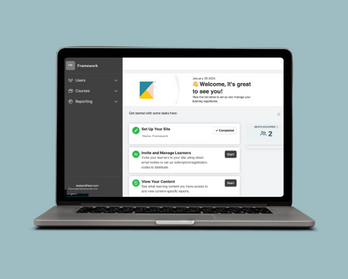This is part of our ongoing series on everything to know about homebuying.
Saving up for a down payment on a home? Running the numbers could make you feel like you’re running uphill.
The median sales price for homes in the United States was $293,349 as of June 30, 2021, according to Zillow. If you’re trying to put together what’s believed to be the standard 20% for a down payment, you’ll need to pull together at least $58,000 before you can start home shopping.
Since $58,000 is, by most people’s calculations, a heck of a lot of money, the dream of being a homeowner may seem unattainable, but we assure you this isn’t the case.
Actually, 20% isn’t even the norm anymore. Most U.S. homebuyers put 7% down in 2020, according to a survey from the National Association of Realtors. (For a home listed for $293,349, 7% would be $20,534).
How did so many buyers put down such a small percentage? Many took advantage of first-time homebuyer down payment assistance programs offered by various agencies, municipalities, nonprofits, and other resources. Some help with closing costs, too!
To give you an idea of what is available, we put together this organized list — and you can always learn more about programs and options to make homeownership more affordable by taking Framework® Homebuyer Education.
Keep in mind that programs like these tend to have restrictions, such as income limits and deadlines for money to be paid back, so you’ll want to research them further on your own.
FHA loans
Created during the Great Depression, the Federal Housing Administration is designed specifically to raise homeownership levels in the United States. Among its services are low-interest FHA loans, which require 3.5% down. There is no income cap to qualify, but you will need a reasonable debt-to-income ratio, and your credit score must be above 580. If your score is between 500-570, the FHA will want 10% down. FHA loans are offered through various lenders, so you’ll want to shop around.
Big banks
These major lenders offer mortgage options with low down payments for those who qualify (and they aren’t the only ones):
Fannie Mae HomeReady® mortgage: The Fannie Mae HomeReady® mortgage is designed for low-income buyers. It requires a 3% down payment and a credit score of 620 or higher.
Freddie Mac Home Possible® Advantage mortgage: These loans require 3% down and are geared toward low-income applicants, generally with credit scores of 620 or higher.
Employer assistance
Have a long commute because the only affordable places to live are out in the boonies? Some employers (typically larger ones, like governments, universities and big companies) assist employees in their purchase of a home closer to where they work.
Veterans and active service military
If you’re a veteran, active-duty, member of the National Guard and Reserves, or surviving spouse, let us first say thank you for your service. There are loan programs to show appreciation for your efforts too.
VA loans: The U.S. Department of Veterans Affairs offers loans that require no down payment and no private mortgage insurance, with low interest rates.
Military Housing Assistance Fund: Three words – free closing costs!
City or state aid
There are all kinds of local programs that help with down payments and closing costs. Some municipalities offer financial incentives to buy a home in redeveloping neighborhoods within their boundaries. Chicago, Boston, Los Angeles and Seattle are just a few major cities that offer homebuyer assistance.
Demographic-based programs
These are some potential beneficiaries of demographic-based programs, and there are many more:
Indian Home Loan Guarantee Program: This federal Housing and Urban Development (HUD)-backed loan program allows low down payments from American Indian and Alaska Native families, Alaskan villages, tribes and designated housing entities.
Native American Homeownership Initiative: In more than a dozen states and territories, the NAHI program from the Federal Home Loan Bank of Des Moines gives up to $15,000 per eligible household to help with down payments, closing costs, homeownership counseling and general home repair.
USDA Rural Development Loans: If you live in a rural area, you may qualify for a zero down payment loan through the U.S. Department of Agriculture.
Community service
It makes sense for community service professionals to live in the areas they serve, so there are a variety of programs to help police officers, firefighters, teachers, health care workers, social workers and other do-gooders afford homes. Here are just two:
Everyday Hero Housing Assistance Fund: EHHAF isn’t the simplest acronym, but this program is far-reaching. Though based in Denver, it covers closing costs for community service workers in all 50 states, and recipients never have to pay the money back.
Good Neighbor Next Door Program: This HUD program gives various community service professionals a 50% discount for some properties in revitalizing neighborhoods. Even better? Those with FHA loans only need a 10% down payment.
Need more financial assistance? Head to our story “5 Creative Ways to Afford Your Dream House.”




